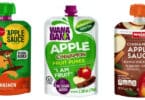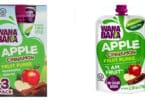For the first time in history, the U.S. Food and Drug Administration (FDA) has issued specific guidance on acceptable lead levels in processed foods intended for babies and young children. This action is part of the FDA’s ongoing “Closer to Zero” initiative, aimed at reducing harmful toxins in foods consumed by the most vulnerable populations.
Lead exposure can be harmful at any age, but infants and toddlers are particularly vulnerable. Even low levels of lead exposure can negatively impact brain development, leading to cognitive and behavioral issues, lowered IQ, and other long-term effects on health. Lead exposure can also harm the cardiovascular, renal, and immune systems. According to the Centers for Disease Control and Prevention (CDC), there is no known safe level of lead exposure for children.
Despite being a natural element, lead often finds its way into food due to environmental contamination from industrial activities, pesticide residues, or old processing equipment. Foods such as root vegetables and grains, which grow in or near soil, are particularly susceptible.
FDA’s New Guidelines
The FDA’s new action levels for lead in baby food are nonbinding recommendations aimed at encouraging the industry to reduce lead levels. These guidelines are as follows:
- 10 parts per billion (ppb) for fruits, vegetables (excluding single-ingredient root vegetables), mixtures, yogurts, custards, puddings, and single-ingredient meats.
- 20 ppb for single-ingredient root vegetables like carrots and sweet potatoes.
- 20 ppb for dry infant cereals.
These guidelines reflect levels the FDA considers achievable by manufacturers under current best practices. While not enforceable, the FDA may use these action levels to determine whether a product is adulterated under the Federal Food, Drug, and Cosmetic Act.
What Foods Are Excluded?
The new guidance does not cover certain categories of foods, including:
- Infant formula.
- Beverages, including toddler drinks.
- Snacks like puffs and teething biscuits.
The FDA is collecting additional data on these categories to assess whether future action levels may be necessary.
How Do These Guidelines Compare to Previous Proposals?
In 2021, the Baby Food Safety Act proposed stricter limits on heavy metals in baby food, including lead, arsenic, cadmium, and mercury. The proposed limits were:
- Inorganic arsenic: 10 ppb (15 ppb for cereal).
- Cadmium: 5 ppb (10 ppb for cereal).
- Lead: 5 ppb (10 ppb for cereal).
- Mercury: 2 ppb.
The bill also required manufacturers to test their products and disclose results. However, the Baby Food Safety Act has not yet passed. The FDA’s new guidance on lead focuses solely on this toxin and does not include limits for arsenic, cadmium, or mercury.
The guidance is part of the FDA’s broader “Closer to Zero” plan, which adopts an iterative, science-based approach to minimizing exposure to toxic elements. The FDA plans to revisit and potentially update these guidelines as new scientific data and technological advancements become available. The agency’s goal is to ensure dietary lead exposure remains below the Interim Reference Levels (IRLs):
- 2.2 micrograms/day for children.
- 8.8 micrograms/day for women of childbearing age.
By setting these action levels, the FDA estimates significant reductions in lead exposure from processed baby foods:
- 19% reduction for fruits, vegetables, mixtures, yogurts, custards, and single-ingredient meats.
- 29% reduction for single-ingredient root vegetables.
- 24% reduction for dry infant cereals.
What This Means for Parents
The FDA advises parents not to throw away baby food they already have or restrict their child’s diet unnecessarily. A varied diet remains essential for providing essential nutrients for growth and development. Nutrient-dense foods across all major food groups can help mitigate the risks associated with lead exposure.
Parents can take additional measures to minimize lead exposure:
- Read Labels: Opt for brands that prioritize transparency and adhere to the FDA’s guidelines.
- Diversify Foods: Avoid over-reliance on high-risk foods, such as root vegetables and dry cereals.
- Prepare Fresh Foods: When possible, prepare homemade purees using thoroughly washed and peeled fruits and vegetables.
FDA is encouraging manufacturers to:
- Source ingredients with lower lead levels.
- Conduct regular testing of raw materials and finished products.
- Implement best practices in peeling, washing, and processing to reduce contamination.
- Innovate to achieve even lower levels of toxic elements.
The FDA acknowledges that achieving these levels will require effort but emphasizes that they are both feasible and essential for public health.
The FDA plans to address other toxic elements, including arsenic, cadmium, and mercury, in future iterations of its “Closer to Zero” initiative.






